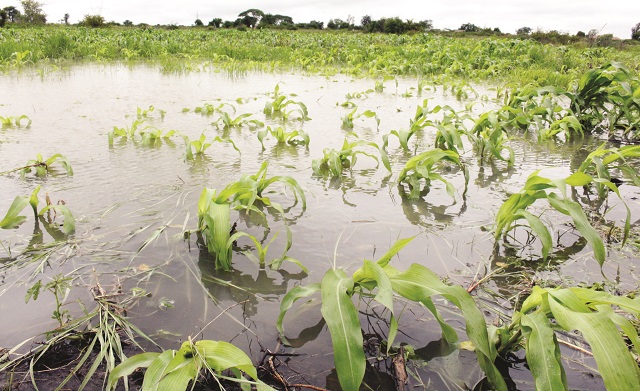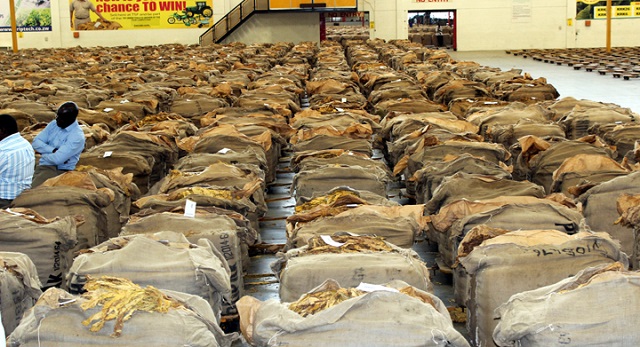Sadc: from El Nino to La Nina?


Waterlogging as rains continue to fall has affected crops in parts of Bubi and Nkayi districts. The picture, taken recently, shows a waterlogged field in Bubi District, raising fears that hopes for a bumper harvest could be dashed in the area. — (Picture by Eliah Saushoma)
While Sadc last year raised an SOS for billions of dollars to help citizens affected by an El Nino-induced drought that ravaged the region in the 2015/16 season, the bloc could be heading for another calamity, this time around caused by La Nina, a phenomenon the very opposite of El Nino.
La Nina has already started showing its ugly side in some parts of the region.
Last year, Sadc declared the drought a regional disaster with over 40 million people affected, 23 million of whom needed immediate humanitarian assistance.
But the El Nino which triggered higher than normal temperatures over huge swathes of the region and is regarded as probably the strongest to hit the region so far, seems to have been replaced by an opposite phenomenon, La Nina.
The La Nina, characterised by low temperatures and heavy downpours, appears to be grippling the region, with some parts already experiencing flash floods.
While the rains have brought with them joy and expectations of bumper harvests, the incessant downpours and flash flooding could signal bad news as well if predictions of a La Nina phenomenon by weather expects is anything to go by.
“El Nino phenomenon usually degenerates into the opposite which is La Nina and there is a 50 percent likelihood that the region would face La Nina, a phenomenon that is usually characterised by heavy rains and flooding,” United Nations Development Programme (UNDP) Zimbabwe country co-ordinator Verity Nyagah told stakeholders at the Southern African Regional Climate Outlook Forum (Sacof) late last year.
Nyagah urged the Sadc region then to stay on the alert and come up with measures to deal with La Nina-related disasters.
Another expert, Milton Chamisa, said the weather forecast in Zimbabwe and the Sadc region at large indicated that there would be more rainfall, meaning flooding could be expected in most parts of the region.
“We have already witnessed floods in Zimbabwe, South Africa and Botswana and the weather forecast is predicting more rains. This simply means we could be heading for La Nina,” he said.
In Zimbabwe, the Civil Protection Unit (CPU) said six provinces risked flooding as the rains continued to pound most parts of the country.
Areas on high risk of flooding include Muzarabani, Mashonaland Central, Tsholotsho in Matabeleland North, Beitbridge in Matabeleland South, Chiredzi in Masvingo, Middle Sabi in Manicaland and Gokwe North in the Midlands.
“We have identified provinces that are at high risk of flooding and all the civil protection structures are on the alert,” said CPU acting director, Sibusisiwe Ndlovu.
Floods have already left a trail of destruction in some Sadc countries and in Zimbabwe human lives have been lost as the country grapples with floods.
According to statistics released so far by the CPU, at least 56 human lives have been lost while 12 others have been injured due to either flooding or lightning.
Over 621 families have been left homeless while about 1 000 livestock have been killed across the country.
Property worth thousands of dollars was also destroyed in Harare and Kadoma when some suburbs were hit by floods.
Floods have also ravaged Botswana and reports from the neighbouring country say major bridges were washed away as heavy rains pounded the country.
Elias Magosi, Botswana’s permanent secretary in the Ministry of Transport and Communications, was recently forced to address a press conference after members of the public accused contractors of doing a shoddy job following a disaster that saw bridges in the southern parts of the country being swept away.
In South Africa, human lives were lost while several families were left homeless when flash floods hit Mpumalanga and Limpopo provinces. — Zimpapers Syndication.











Comments